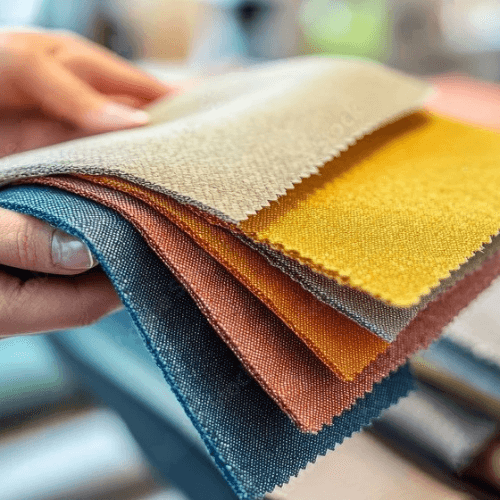How Cultural Trends Shape the Popularity of Specific Fabrics Globally

Cultural trends significantly influence the popularity of specific fabrics around the world, reflecting deeper societal values, aesthetics, and consumer preferences. As globalization continues to intertwine cultures, the textile industry is witnessing a dynamic shift in fabric choices that are shaped by heritage, sustainability, and technological advancements. This blog explores how these cultural trends impact fabric popularity globally.
### 1. **Globalization and Cross-Cultural Exchange
Globalization has transformed the textile landscape, allowing for a rich exchange of cultural influences that shape fabric choices:
– **Fusion of Styles:** The blending of traditional motifs from different cultures has led to the creation of hybrid fabrics that appeal to a global audience. For example, fabrics that combine Japanese Shibori dyeing techniques with African tribal patterns are becoming increasingly popular in contemporary fashion.
– **Access to Diverse Textiles:** The rise of e-commerce and digital platforms has made it easier for consumers to access textiles from various cultures. This exposure allows individuals to explore and incorporate fabrics from different parts of the world into their wardrobes.
– **Cultural Appropriation vs. Appreciation:** While globalization fosters cultural exchange, it also raises concerns about cultural appropriation. Designers must navigate these complexities by respecting and honoring the origins of traditional fabrics while creating innovative designs.
### 2. **Sustainability and Ethical Fashion
As consumers become more environmentally conscious, sustainability has emerged as a critical factor influencing fabric choices:
– **Demand for Eco-Friendly Fabrics:** There is a growing preference for natural fibers such as organic cotton, linen, and hemp, which are perceived as more sustainable compared to synthetic materials. Consumers are increasingly seeking textiles that align with their values regarding environmental responsibility.
– **Preservation of Traditional Techniques:** Many sustainable fabrics incorporate traditional craftsmanship that emphasizes local materials and techniques. For instance, handwoven textiles from indigenous communities not only promote sustainability but also preserve cultural heritage.
– **Transparency in Sourcing:** Consumers are demanding greater transparency regarding the sourcing of fabrics. Brands that can demonstrate ethical practices in their supply chains—such as fair trade certifications or environmentally friendly production methods—are more likely to attract consumers who prioritize sustainability.
### 3. **Cultural Heritage and Identity
Cultural heritage plays a significant role in shaping fabric preferences:
– **Traditional Fabrics as Symbols of Identity:** Fabrics often carry deep cultural significance, serving as symbols of identity and heritage. For example, the vibrant colors and patterns of African Kente cloth are not only visually striking but also represent specific cultural narratives.
– **Celebration of Local Craftsmanship:** There is a renewed interest in locally produced textiles that showcase traditional craftsmanship. Fabrics like Indian silk or Peruvian alpaca wool highlight regional techniques and artistry, appealing to consumers seeking authenticity in their purchases.
– **Fashion as Cultural Expression:** Clothing choices often reflect cultural identity, with specific fabrics becoming associated with particular communities or traditions. For instance, the use of tartan patterns in Scottish attire signifies cultural pride and heritage.
### 4. **Technological Advancements
Technological innovations are reshaping fabric design and production processes:
– **Digital Printing Technology:** Advances in digital printing allow designers to experiment with intricate patterns inspired by diverse cultures without the limitations of traditional methods. This technology enables the creation of unique textiles that blend various cultural influences seamlessly.
– **Smart Textiles:** The rise of smart textiles—fabrics embedded with technology—reflects changing consumer preferences for functionality alongside aesthetics. These innovations cater to modern lifestyles while incorporating elements from different cultures.
### 5. **Economic Factors Influencing Fabric Choices
Economic conditions also play a crucial role in shaping fabric popularity:
– **Affordability vs. Luxury:** In emerging markets, consumers may prioritize affordability when choosing fabrics, leading to increased demand for budget-friendly options. Conversely, affluent markets may see a preference for luxury materials such as silk or cashmere that signify status.
– **Impact of Fast Fashion:** The fast fashion industry has made trendy fabrics widely accessible but often at the cost of ethical considerations. As awareness grows regarding the environmental impact of fast fashion, consumers may shift towards more sustainable options that reflect their values.
### Conclusion
Cultural trends profoundly shape the popularity of specific fabrics globally by intertwining heritage with modern values such as sustainability and globalization. As consumers increasingly seek textiles that resonate with their identities while supporting ethical practices, designers must adapt to these evolving preferences.
By embracing the rich tapestry of global cultures in their fabric choices, brands can create innovative collections that celebrate diversity while fostering inclusivity within the textile industry. Understanding these cultural influences will be essential for businesses looking to thrive in an interconnected world where fabric choices reflect not only personal style but also shared values and traditions.






